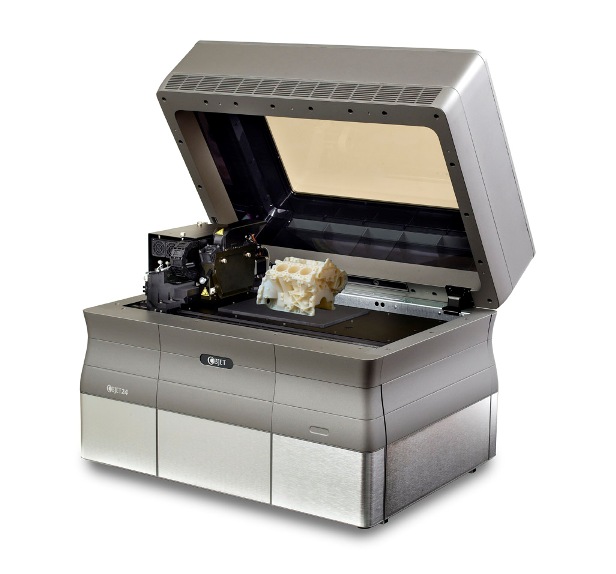Reshaping the world with 3D printers

It's not quite the new tech bubble, but 3D printing has been quietly exploding in the background of the consumer technology sphere. In 2010, the value of shipped 3D printing products totalled US$1.33bn, and that's set to keep rising even as the price of the technology plummets.

A 3D printer
(Credit: Objet)
Where traditional industrial manufacturing is usually a subtractive process, where material is removed from an object to create the final product, 3D printing is an additive process, where material is piled up to build an object from nothing.
The methodology isn't all that different from 2D printing on a page with ink. Your device rolls the paper past the mechanism that applies the ink (an inkjet, laser or pinwheel if you're an early '90s holdout) and a layer of ink is applied in the required pattern, density and colour.
3D printing does the same, but the mechanism that applies the layer of material makes subsequent passes and sets down further layers until it has built up a 3D object. The process can take anywhere from hours to days and can be used to make anything from novelty chess pieces to car body parts.
And given that anybody can buy a 3D printer, like the Makerbot, for example, the concept has put manufacturing in the hands of anyone with a few square feet of free real estate on their desk.
At the moment, 3D printing can't match the quality of industrial manufacturing, but that hasn't stopped people from pushing the envelope. One US entrepreneur has been experimenting with creating synthetic human organs for transplant, and clinical trials on printing the first plastic bladder are starting soon. Some scientists familiar with the technology suggest the same thing can even be done with living cells (instead of plastic) to build organic body tissues.
The process starts with a design — which could be anything from a spaceship hull created using high-end computer aided design (CAD) software to a personalised robot using myrobotnation.com. The design work will result in a file (in a format such as .stl, for stereolithography), which is sent to the printing device in the same way a text document or a photo is sent to an inkjet.
A 3D printed object
(Credit: Objet)
The file contains information that renders triangulated surfaces of each layer and the device "draws" these layers one after the other. 3D printers look different than a normal device, and they differ vastly in price (they can run anywhere from $1200-$20,000), but the principle is the same. The system receives coordinates for each layer, and a series of arms drives the nozzle that applies the material in a series of movements, applying it to the layer below.
There are a host of choices of printing materials depending on the desired output: transparent, rubberised, medical or rigid. Most are variations on common polypropylenes, polymers or resins and can be bought on a spool just like a roll of cotton. Prices vary accordingly, but not all materials are prohibitively priced. One US website sells one kilogram of ABS (acrylonitrile butadiene styrene, an engineering polymer) for US$79.
What can be done with the final product is limited only by the tensile strength of the material. In one example that sounds like it's straight out of a sci-fi movie, you can use a 3D printer to produce the components required to create a precise copy of itself. Or how about printing up a few discontinued appliance parts? Just download the appropriate file.
But you don't have to own a 3D printer to take advantage of 3D printing — the web has made it easy to offer 3D printing as an online service. For as little as $15, for example, you can upload a design file and have your finished model shipped to you.